8.8 /10 1 Votes
9.5/10 GameSpot Initial release date 11 August 1997 | 8/10 IGN Developer H2O Entertainment | |||||||||||||||||||||||||||||||||
 | ||||||||||||||||||||||||||||||||||
Similar H2O Entertainment games, Puzzle video games | ||||||||||||||||||||||||||||||||||
Cgrundertow tetrisphere for n64 nintendo 64 video game review
Tetrisphere is a falling block puzzle video game for the Nintendo 64 (N64) console. Developed by Canadian company H2O Entertainment, a nearly complete version of the game was originally slated for release on the Atari Jaguar in early 1995. After Nintendo obtained its publishing rights, Tetrisphere was reworked for the N64 and released on the platform in North America on August 11, 1997 and PAL regions in February 1998.
Contents
- Cgrundertow tetrisphere for n64 nintendo 64 video game review
- Tetrisphere nintendo 64 n64
- Gameplay
- Development
- Reception
- References
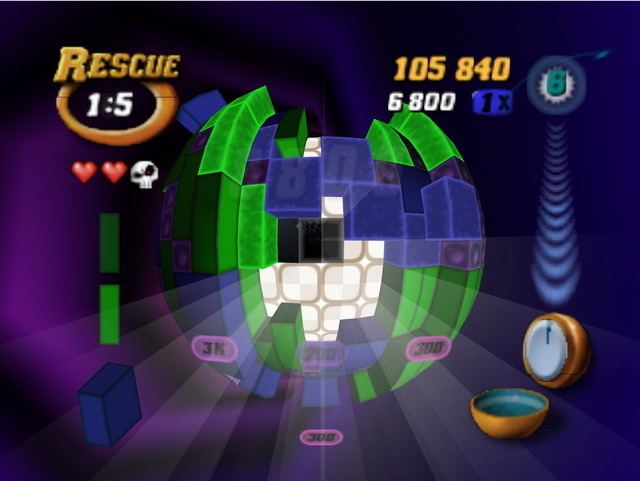
Tetrisphere is a variant on Tetris in which various shapes are shifted across a wrapped three-dimensional grid resembling a sphere, and then destroyed. The objective of the game changes depending on the mode, but generally consists of removing layers of shapes to reach the playing field's core. Despite very little domestic advertising, Tetrisphere enjoyed moderately good sales and a mostly favorable critical reception. Reviewers praised the game's originality and the musical score composed by Neil Voss.
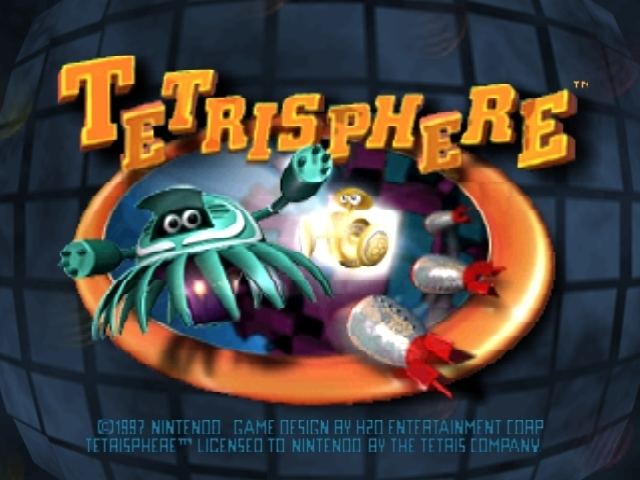
Tetrisphere nintendo 64 n64
Gameplay
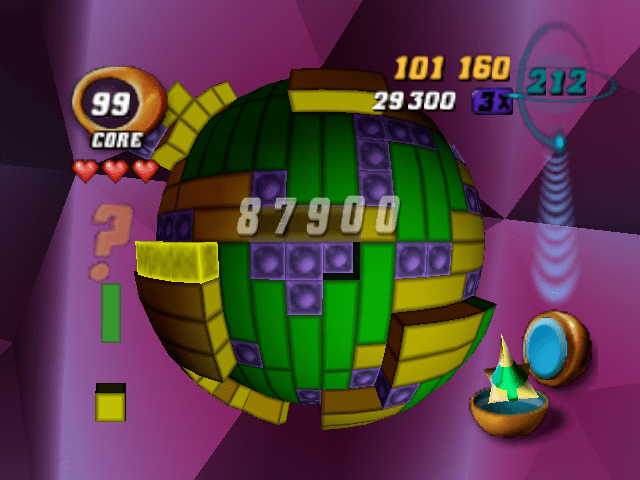
In most Tetris titles, a player's score is incremented as a result of completing "lines", where a row of brick pieces that is without gaps is removed from the 2D playing field. This both earns points and removes the completed row, making room for further pieces. However, in Tetrisphere, the goal is instead to remove bricks by forcing three of the same type of piece to touch as a result of a "drop". A drop is achieved when any brick falls, either as a direct result of the player releasing the currently held brick, or when the brick which supports it from below is removed by any method. When three bricks of the same type touch, this triggers a "reaction". When a reaction occurs, the three bricks will glow brightly and implode, removing themselves from the field of play. Any other same-shaped blocks which are touching that reaction will also be removed in a chain reaction. For example, if a player has lines of nested "Z" pieces, and then drops another "Z" directly on top of one of the nested "Z"s, the one which was dropped will cause the piece below to implode, in turn causing all identical pieces touching that piece to explode, and so on. The only exception is that the pieces involved (including the original three) must abide by the rules which dictate which pieces are "touching". For example, any two matching pieces which are stacked must be exactly on top of each other, if they are both to be removed. Laterally, each piece obeys the rules specific to its shape. As an illustration of this point, "O" pieces (a 2x2 square, colored blue) and "I" pieces (a 3x1 or 1x3 rectangle, colored green or yellow) must have full contact on one side with one full side of another piece of the same shape, but all other pieces are considered "touching" if any part of them is in contact with another of the same shape.
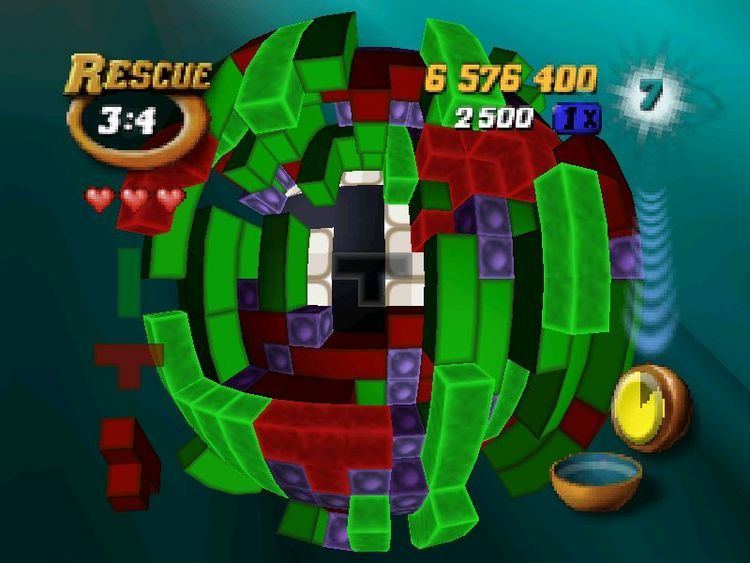
There is a penalty incurred each time a player drops a brick without starting a reaction. The player may be penalized three times during a given play period, after which the round ends. While the player is scrutinizing the playfield, searching for likely reactions, a blue timer slowly counts down. When the timer reaches zero, a new yellow timer starts and the player begins to move towards the sphere at an increasingly fast pace (moving back to the default position for each piece dropped). That timer may also expire, causing a new and final red timer to begin, which moves the player towards the playfield even faster than the yellow timer. There is no penalty if the final timer reaches zero, but if the player gets too close to the playfield, the piece is dropped, causing a penalty if there is no reaction. The timer is slightly refilled for every piece removed, and is reset to a full blue timer when a penalty is incurred. Removing 20 or more pieces will provide access to progressively more powerful assistive (or "magic") devices such as sticks of dynamite or rockets, that the player may employ at any time to remove large sections of the surface. Each type of explosive has its own pattern of removal, area of effect, and drawbacks. This also multiplies the player's score for each piece removed.
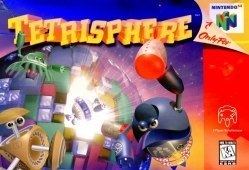
There are several modes of play available in Tetrisphere. The foremost single-player mode is "Rescue", which challenges the player to free a robot from the core of a sphere. As levels increase, the number of layers, size of the trapped robots, and types of pieces present increase. "Hide + Seek" has the same objective, and consists of a mix of different challenges, such as exposing a picture imprinted on the sphere's core. The "Puzzle" mode removes the drop timer, the combo weapons, and the infinite and random natures of the pieces supplied to the player. Instead, players must remove all blocks from the surface of the globe, given a finite number of sliding moves and drops of select pieces. The "Vs. CPU" and the two-player "Vs. Player" feature split-screen race to reveal a number of core squares. "Time-Trial" and "Practice" modes, as well as a training tutorial, are also available. Finally, a hidden "Lines" mode exists, where pieces cannot be dropped. Instead, blocks implode by themselves if three of the same type are lined up with each other.
Development
Tetrisphere was developed by H2O Entertainment (founded by; Steve Shatford, Chris Bailey, and Michael Tam), which was based in Calgary, Alberta, Canada. The game began as an Atari Jaguar game entitled Phear and was on display in Atari's booth at the Consumer Electronics Show in 1995 where Nintendo reportedly secured the rights to the game. Phear was later announced as a Nintendo 64 release at Nintendo Space World that same year. H2O, which had completed a reverse takeover with Canadian Entech Resources Inc., began working exclusively for Nintendo during the game's development.
Around the time the company went public, Nintendo announced that Tetrisphere would be released in October 1996, boosting the company's stock. This didn't work for the partners in H20, though. "That was the first they had heard of the release date," the Canadian Business magazine said. The company strove to finish the game by October but that wasn't found to be feasible. The delay significantly hurt H20's stock. "In terms of credibility and how investors perceived us, it really hurt us," partner Michaal Tam said. Once the planned release date had passed, Nintendo assigned six employees (approximately half a department) to the team.
Nintendo also imposed strict conditions upon the developer. "We weren't able to disclose any information," H20 developer Michael Tam said.
The game was developed on Silicon Graphics Indy, Indigo and O2 workstations. The music was composed in FastTracker 2 on a Pentium PC. The graphics were created with SoftImage running on Indigo and O2 workstations. The game was written in the C programming language and compiled to target 'Ultra64' development boxes for testing and bug tracking.
Senior developers improved the engine so that only part of the sphere is visible at any time, thus reducing the render load on the N64 hardware. The framerate was increased, allowing for a two-player mode not present in the first version.
Steve Shatford was the Sr. Game Designer and Tetris creator Alexey Pajitnov contributed to the game's design while working at Microsoft. The North American release of Tetrisphere was ultimately delayed until August 1997, when it became the first puzzle game available on the Nintendo 64.
The techno-style soundtrack for Tetrisphere was composed by Neil Voss. He began the project as a freelancer when it was on the Jaguar, then signed on as an audio director when it moved to the Nintendo 64. Voss was the sole producer, composer, and sound engineer, but had help from in-house programmer David Pridie and staff from Silicon Graphics. Beginning with a cyberpunk style, the team transitioned to the techno genre due to the "uniqueness" of Tetrisphere as a puzzle game. Voss explained that Tetrisphere features only stereophonic sound because "[...] for a game where the action is all around you, it could enhance gameplay and the immersive experience." Voss was also able to simulate surround sound.
The composer frequently used samples during production, specifically in the tracks "Extol", "Martist", and "Hallucid"; for instance, "Extol" uses a chorus of Balinese singers from a stock sample CD. The song titles were chosen as they would be if released on an album. Voss elaborated, "'Azule Lux' was supposed to be 'blue light' relating to one of the level backgrounds that impressed me visually. 'Snowy Mushrooms' is a drug reference and equally a reference to Nintendo's penchant for mushroom imagery. 'Phony' is because I felt that track was too close to Liam Howlett's (of the Prodigy) (me being phony). 'Extol' means to praise, which I felt was appropriate... Things like that."
Reception
Tetrisphere was distributed for sale among a network of 17,000 retailers in North America and Europe. Despite little advertising in the United States, Tetrisphere managed to sell 335,000 copies in the region between its August release date and December 31, 1997. Out of 42 titles, Tetrisphere ranked at number 27 in terms of sales for Nintendo games in 1997. H2O Entertainment announced that the game had sold 430,000 copies worldwide as of March 31, 1998.
Nintendo Power ranked Tetrisphere at number 50 on its list of "100 Best Nintendo Games of All Time" in September 1997. The magazine also gave it an award for "Best Soundtrack" for its annual awards for that year. IGN considered the game's soundtrack to be the fourth best of any N64 game.
